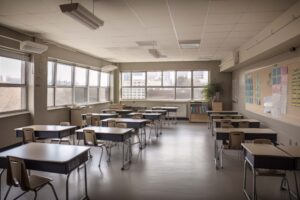Their impact is considerable on the professional and personal future of young people. Nowadays, joining a university can be a real challenge for many students.
This situation is due to an increase in applications for registration, but also to recent education reforms which have profoundly modified the access and selection processes carried out by establishments.

The concentration of higher education, the increase in the requirements of selective courses, the social and territorial disparities accentuated by these reforms constitute real obstacles for students. The massification of higher education poses a major challenge, as the number of students seeking to enter universities continues to grow. This increase is explained by the lengthening of compulsory schooling and the democratization of higher education.
In addition, this increase in registrations often comes up against a lack of capacity in certain universities, particularly the most prestigious or in particularly attractive fields such as law or medicine.
In France, the Parcoursup system set up in 2018 was criticized for its selection criteria, which made access to certain universities more difficult for otherwise motivated students.
In 2019, according to a study by the Observatory of Inequalities, nearly 57% of students did not obtain their first choice of orientation via Parcoursup, which shows the problem of distribution of available places.
In addition, these reforms have led to increased selection in certain sectors, notably with the implementation of new admission processes; the selection criteria are becoming more and more demanding, especially in selective sectors.
In medicine, the reform of PACES (First Common Year of Health Studies) has changed the selection criteria for students from the first year. Although this reform aimed to reduce the failure rate and diversify student profiles, it has contributed to increasing the pressure on candidates from high school onwards.
In European countries, this phenomenon is also visible, the competition between students to enter prestigious courses is exacerbated. In Germany, the Numerus Clausus system imposes very strict quotas for courses such as medicine, thus reducing the chances of admission of candidates.
Finally, social and territorial inequalities have been amplified by the reforms. Access to university is unevenly distributed across the territory, with some regions having more recognized universities than others. Students from rural areas or less well-served areas often have to travel far from home to pursue their studies, which increases the cost of education (housing, transport, etc.) and can discourage some.
In addition, recent reforms have sometimes increased the gaps in achievement based on social origin. For example, in the context of Parcoursup, students from prestigious high schools are often favored in the selection process. According to sociologist Pierre Merle, this overrepresentation of students from privileged backgrounds in the best universities contributes to reproducing social inequalities within the education system. In conclusion, for many students, integrating a university in the context of recent education reforms represents a major challenge. Although they have sought to modernize and improve access to higher education, they have often had the effect of increasing selection and amplifying social and territorial inequalities.
It is therefore necessary to rethink admissions systems in order to guarantee equitable access to all students, regardless of their background or origin. This is not only a matter of social justice, but also of the future of a society where qualifications and education are key issues for economic and cultural development.
Source(s):
Observatory of Inequalities. “The effects of Parcoursup on access to university”, 2019. Merle, Pierre. The democratization of education: an international comparison, PUF, 2020. Ministry of Higher Education and Research. “Reforms of health studies: towards a new model”, 2020.
